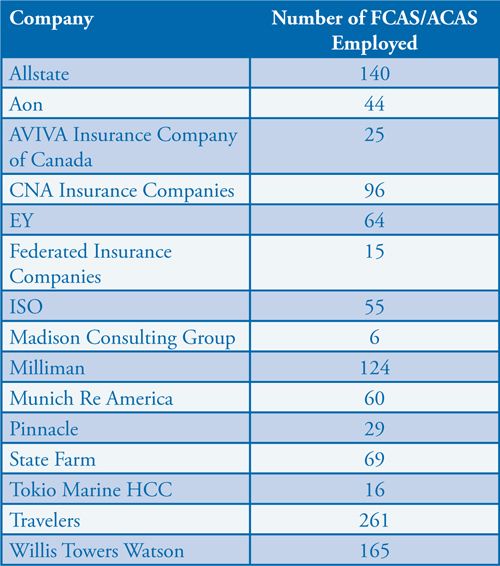Getting to Know the Employer Advisory Council
Customer centricity is a hot topic these days. Just look at the rise of behavioral economics (or read about the field in the book, Misbehaving: The Making of Behavioral Economics, recently reviewed on the Future Fellows Blog). Countless resources have been invested in trying to predict how consumers will act. Companies in every industry are revamping products, services and distribution models with a greater emphasis on the customer experience and what the customer wants. Have you ever thought about all the customers the Casualty Actuarial Society (CAS) serves? As a "leading international organization for credentialing and professional education," (according to the "About Us" section of the CAS website) one major customer group is the employers of the actuaries the CAS credentials and educates. With such a large and varied group of employers, how does the CAS try to figure out what these customers want? Well, one way is that the CAS asks them.
Formed in 2014, the Employer Advisory Council (EAC) currently consists of 16 actuaries who are leaders from a representative sample of casualty actuary employers. According to Mike Boa, CAE and Chief Communications Officer for the CAS, members of the EAC "reflect the wide diversity of employers of casualty actuaries, from company to consultancy; large to mid to small; U.S. to Canadian to global." The EAC's charter poses the Council as a "resource to the CAS in understanding employers' expectations for their actuarial professionals and assessing CAS performance in delivering on those expectations. The Council provides insights and suggestions to enhance CAS value by reviewing the CAS mission, strategic direction, and programs." The EAC is usually chaired by the CAS Penultimate Past President. New members are invited by the CAS Employer Outreach Committee, which manages the Council and also facilitates visits by CAS leadership to large employers. Other important participants include the CAS Board Chair, President, and President-Elect. If you're curious to know who is currently on the EAC, you can find a list of members through the Committee Directory on the CAS website. The current companies represented on the Council and the number of CAS members they employ are shown in the chart below.

Unlike some committees, which might work together to provide a formal recommendation for, or evaluation of, some proposal or new initiative, the EAC operates more like an open forum. Many topics, such as travel time, are ongoing discussions; however, if there is a specific initiative the CAS wishes to address, the EAC is usually brought on during the early planning stages. Through the EAC, the CAS can gain a better understanding of the relative importance to employers of different aspects of a given proposal. By taking this proactive approach in soliciting employer opinions, more-informed decisions are made and better final products are delivered. The members of the EAC benefit, too — and not just from being able to influence CAS decisions. The EAC provides a unique networking opportunity for these actuarial leaders that otherwise wouldn't exist. And through the dialogue, members are able to exchange ideas and discuss the various ways in which their companies support the CAS and its mission.
The EAC meets quarterly: three times a year through teleconference and once in person. The in-person meeting is usually scheduled around a CAS meeting or seminar. This year, the in-person meeting coincided with the Spring Meeting, right after the first Technology-Based Exam (TBE) sitting. As you can imagine, TBE was high on the agenda during that EAC meeting (and had been for several meetings prior). EAC members adamantly advocated for more rigorous testing of the TBE platform before offering the make-up, and even volunteered their employees to aid in the testing process. This partnership between the CAS and the EAC helped facilitate the coordination of make-up proctors, offering the make-up exam in such a short turnaround time, and increased confidence in the make-up exam distribution channel (which many candidates say offered a much-improved exam experience). While TBE has certainly been a focus in the recent past, the EAC has touched on many other areas, too. Such topics include diversity in the actuarial profession, university engagement, Basic Education strategy, continuing education policies, actuarial research, cybersecurity and autonomous vehicles, as well as desired skills for actuaries to possess both now and in the future, just to name a few. Many of these issues get at the heart of the actuarial profession, and the CAS involving the EAC in these discussions indicates how valuable the CAS finds the opinions of the members and the companies they represent.
It is worth noting that the Society of Actuaries (SOA) also has a similar employer advisory group. The fact that such groups exist in both organizations underlies a common commitment to serving their customers, as well as a common acknowledgment of the important role employers can play in shaping the actuarial profession.
